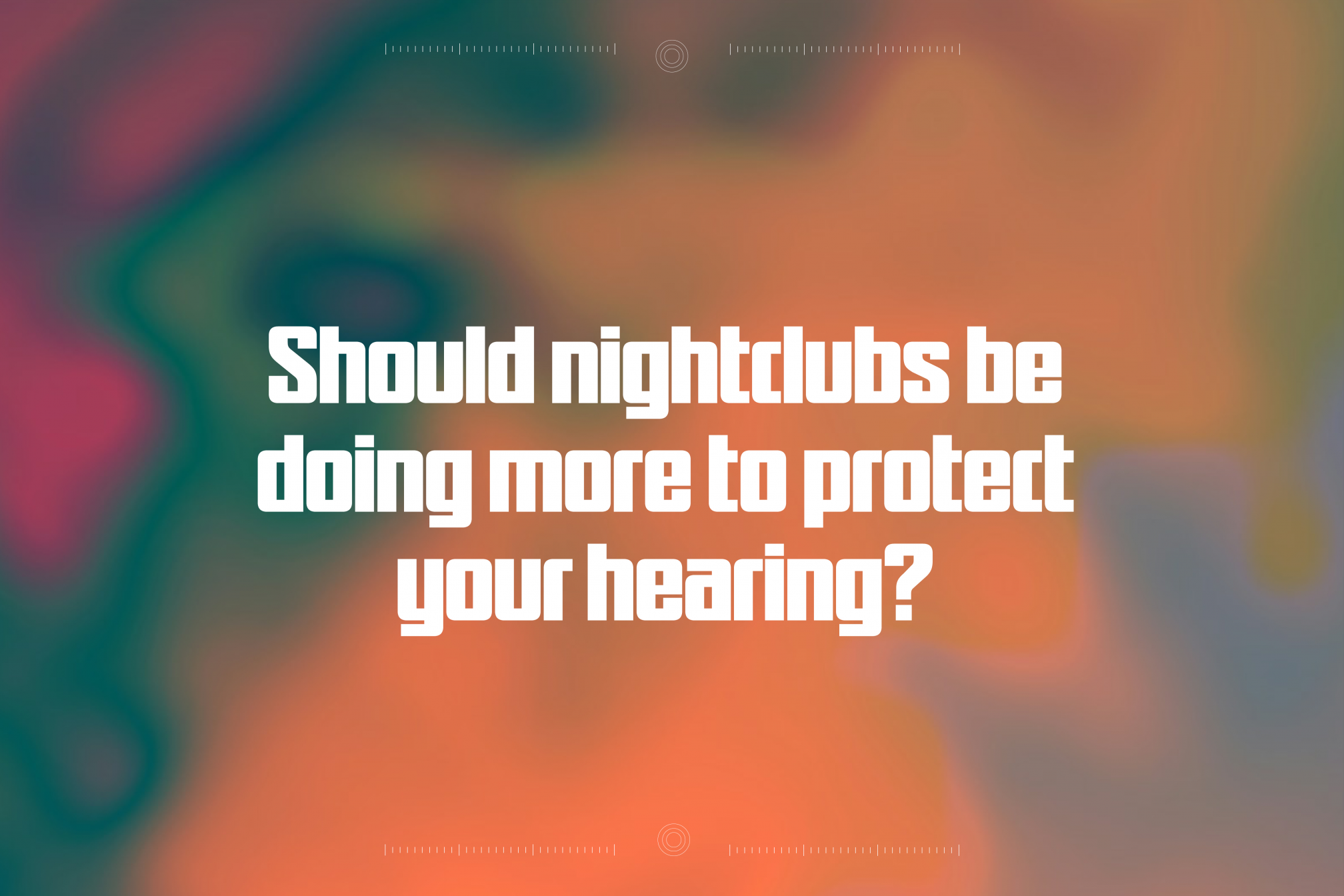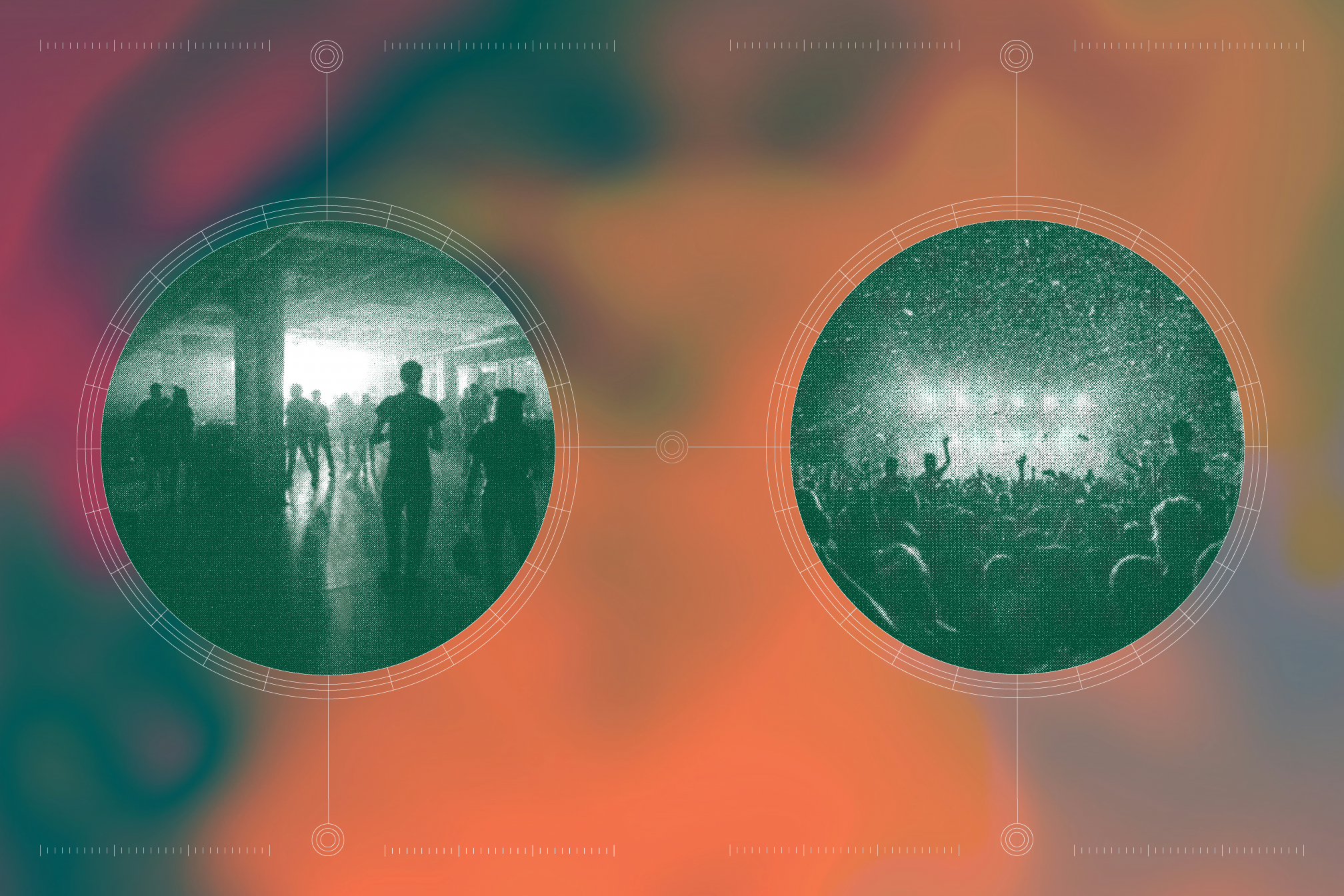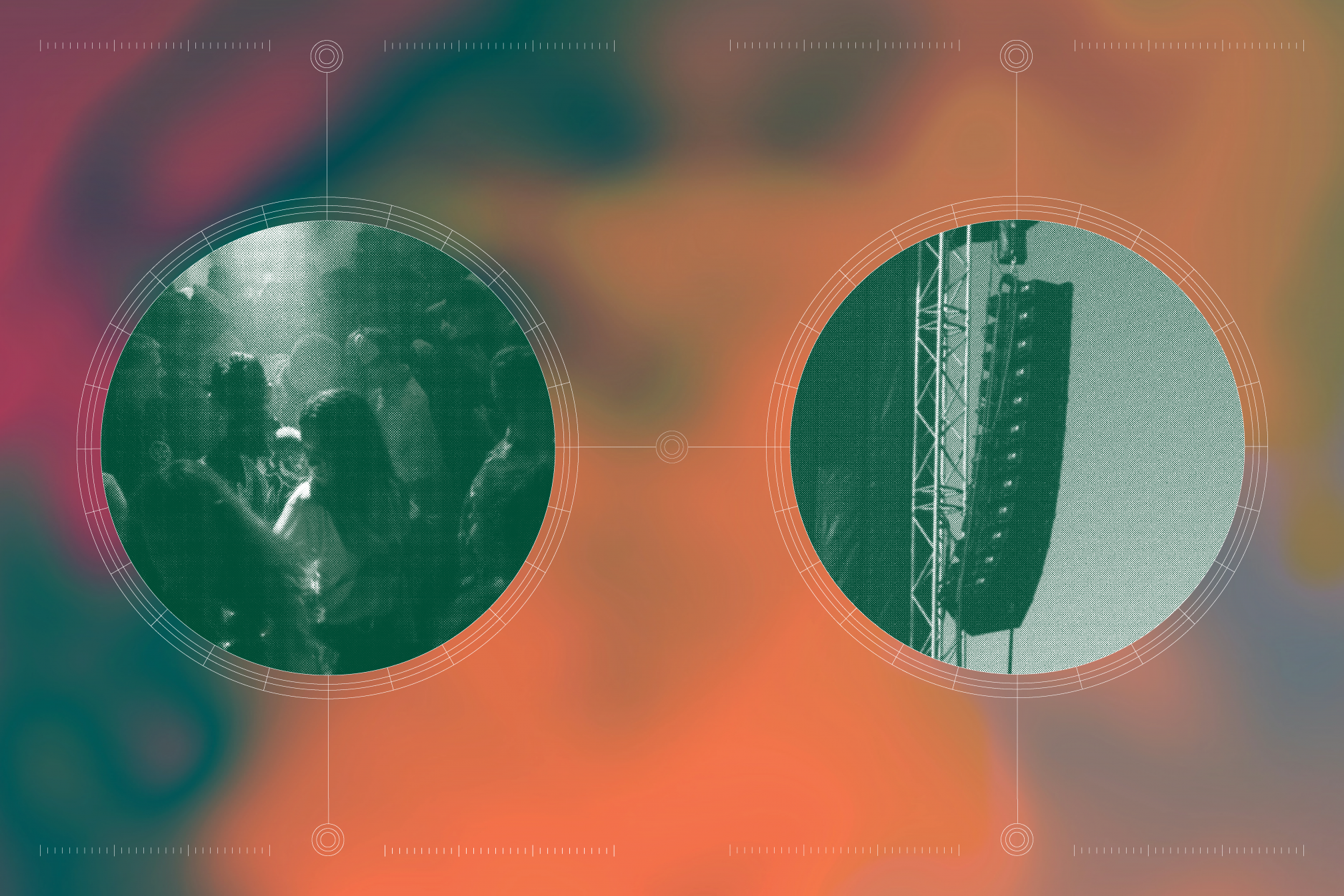 Features
Features
Should nightclubs be doing more to protect your hearing?
As part of Mixmag’s Tinnitus Awareness series, Megan Townsend speaks to industry professionals, experts and crowd members about the impact music events can have on our ears – and what more could be done to prevent hearing loss
We're joining the campaign for Tinnitus Awareness Week 2024 with a series of features raising awareness about ear damage and promoting protection. Check out the ongoing series across our website and socials.
“I remember the exact moment it started,” recalls Hayley Clarke. “It was 2014, and I was watching Gesaffelstein at KOKO in Camden. It was incredible, but ear-splittingly loud! Something just clicked in my ears, it was like a loud amplifier noise and instead of fading out, the high-pitched ringing and fuzziness just kept going. My heart just sank.”
Hayley was experiencing the sudden onset of tinnitus, likely as a result of Noise Induced Hearing Loss (NIHL). It's thought that 1 in 7 adults in the UK suffer from some variation of tinnitus, with research from the University of Nottingham suggesting that the "ringing" sound is a result of the lack of signal to your brain from damaged cochlear cells, the hair-like sensory receptors within your inner-ear. While the cochlear cells degrade over time, they can also be damaged by exposure to loud noises — and once the damage is done, it is sadly permanent. As a result, noise exposure is thought to be the leading cause of preventable hearing loss worldwide. For Hayley, a lifelong music lover who works as a radio and podcast producer in London, suffering from tinnitus has had a devastating impact on her life. "If a bar or club is too loud now, it does set my anxiety off a bit and sometimes I have to leave, or at least take a break outside — I never stand anywhere near a soundsystem."
Read this next: The different types of tinnitus and how to spot the signs
The World Health Organisation estimates that 1.1 billion young people are at risk of noise-induced hearing loss, and as a result WHO also took steps this year to address hearing loss in a recreational sphere, sharing a list of safety guidelines at music venues. The recommendations include provisions such as providing earplugs, limiting sound levels, efficient acoustics, quiet zones and staff training — though without any specific regulations on sound levels for audiences, it's often up to nightclubs themselves to provide a duty of care. "Venues should be working to look after people's hearing," FOLD's sound engineer James Newmarch says. "Especially venues with extended operating hours. Having a properly treated room and a system that is clear, and sounds full at lower volumes is important for this."
Mixmag contacted a variety of promoters and venues across the UK for this article, and the majority offer earplugs at a minimum, with even the lower-capacity likes of Liverpool's Meraki and Edinburgh's Sneaky Pete's ensuring customers had access to hearing protection at their events. The Cause confirmed that welfare staff within the venue are trained to spot crowd members who have been stood in front of the speaker stacks for too long, and to warn them of potential dangers; while fabric constantly monitors the decibel level throughout its three rooms, alongside a pre-existing welfare procedure to ask any attendee who has been on the dancefloor for a long time to take a break. Large-scale events like Drumsheds and The Warehouse Project say they offer "quiet zones" alongside making hearing protection available to customers via stalls within the venues.
However, earplugs should be regarded by venues as "a last line of defence", as Sam Couth, a researcher at Manchester Centre for Audiology and Deafness, explains. "The typical gig is probably 100-105 dB, which is high," he says. "If you compare it to your occupational legal level, you can be exposed to around 85 dB for eight hours a day. But, then once we consider the '3 dB rule' things get a little complicated." The 3 dB rule, means that every time noise increases by three decibels, the exposure time should be halved in order to avoid permanent damage to our hearing — taking the safe exposure time of, say, 100 dB down to just 15 minutes. "If you have a mid-range pair of 16 dB attenuating earplugs, that would reduce 100 dB to around 84... which is below that occupational noise level ceiling. But, say that is increased by just 5 dB, you're back down to two hours. Which might be fine for a gig context, but if you're at a nightclub it's likely you'll be exposed far longer than that."

There is currently no legislation to protect the crowd's hearing in venues, with only "vague" guidelines from the Health and Safety Executive's (HSE) on decibel levels, which vary from "A weighting" or "dB(A)", which is the average noise in a room, and a "C weighting", which is the peak. The guidance asks that "any part of the audience area should not exceed 107 dB(A), and the C-weighted peak sound pressure level should not exceed 140 dB." At 107 dB(A), only the highest attenuation earplugs will allow us to safely remain in a venue for over four hours, and can only provide protection again those C-weighted peaks for minutes.
FOLD puts a focus on managing its sound levels throughout the night, in order to avoid those dangerous peaks. "If you don't know how loud you are running, then it's impossible to judge what level of exposure you are giving to the audience," says James Newmarch. "Not enough clubs in the UK do this, and sometimes it is shocking to see the lack of monitoring systems and therefore levels that are being pushed in certain venues. It doesn't need to be 110dB(A) to sound good, but you'll find a lot of places where this is common practice for long periods of time."
The consensus among many sound engineers is that ensuring the soundsystem is up to a good standard - and as a result the dB level can be kept low - is the least nightclubs should be doing to protect crowd members. Soundsystem manufacturer Funktion-One is regarded as pioneering for providing a "clean" sound that doesn't need to be cranked up to the max, but founder Tony Andrews admits that even with a top-of-the-range system, a lack of acoustic treatment in a room can still cause problems. "It's frustrating to see people attempting to make a club out of a space that sounds like a large toilet, and not giving any thought to the sound and thinking loudspeakers will sort that out," he says. "If you do sound treatment, you could maybe go some of the way to mitigating it — but If you're in a room, and people are having to shout at each other to hear each other - that is a problem."
Read this next: Why younger ravers are embracing earplugs
Tony highlights this by comparing the experience of clubbing to going to a restaurant: "If you go to a pizza place, you've got tiled floors more often than not, pretty hard walls, pretty hard ceiling. It's the kind of place where someone puts a knife and fork on the table people can hear it. That noise is bouncing around, so what do people do? They start speaking louder so they can hear each other. It's a vicious circle, the louder people talk, the more reflections there are around the room and the worse it gets," he continues. "The reflection will turn every sound in the room into a cacophony, and that takes away from the intelligibility. Very few [nightclub] owners seem to understand the need for sound absorption."
And as the number of purpose-built nightclubs goes down, and the number of venues within repurposed buildings such as warehouses, industrial buildings, factories goes up - the need for sound treatment is more important than ever. Rich Cufley, from sound engineering and equipment hire firm Sound Services, believes this lack of focus on acoustics is a "dereliction of duty" from promoters and venue owners. Sound Services has worked with the likes of Field Maneuvers, Glastonbury's Glade Stage, The Hydra and are currently working on Midland's upcoming show at Islington Assembly Hall — preferring to work hand-in-hand with organisers from the beginning to get things right. "We have all sorts of ideas about how to do it on less budget," he says, "but some venues are within places that you can’t do things such as screw something to the walls, so the logistics of treating a room can be really difficult, but for me, that's one of the biggest things that would transform music venues overnight and make them sound better."
Low-cost solutions like draping textile over walls, applying acoustic insulation such as rockwall, can have a dramatic effect on how loud a soundsystem has to be to still provide that punch — and, as Rich puts it, can even be the makings of some of our most beloved nightspots. "If you look at what Plastic People did, they basically applied rockwalll directly onto all the walls, but the problem is you can't clean it then, and you want as much air flowing to it as possible for it to work — so they put speaker grill over it," he laughs. "But the difference that made. That club ended up being one of the key drivers in making dubstep such a phenomenon, because people wanted to hear how their music sounded in that room. But it actually wasn't even just due to the soundsystem itself, it was how the room had been treated."
"We've got the technology to reach outrageous volumes now, like you could really hurt people. So as the technology gets better, it puts dangerous technology in the hands of people sooner," Rich says. "But so few people are putting the time into the acoustic treatment, so the volume goes up and people end up with hearing damage." He believes that the ongoing financial pressure on nightclubs is something that has contributed to this lack of focus on achieving good sound, with venues opting for quick fixes in order to keep ticket buyers coming through the door. "It's been a pretty consistent problem since before the pandemic, some people might say they don't have the funds to put sufficient system in," he says.

The lack of in-house sound engineers within nightclubs is another concern, with owners simply renting systems, allowing engineers to set up before opening and then leaving it to performers to keep the system in check and monitor sound levels. "If everything lines up, the room's treated and the system's in then that's good. But if I'm not there, or there's no sound engineer on-hand, I can't ensure there's no redlining. If you've got a big Funktion-One system in there, it requires engineering between sets - sound needs to be adjusted between the beginning of the night and when sweat is dripping off the walls and it's at capacity, you need to employ an engineer to liaise with the DJ."
"A lot of them simply won't pay for an engineer... I mean, it's a highly-skilled job and there's a lot of responsibility. And I just feel like not many venues want to pay for a skilled operative to do that job properly — but are happy to pay DJs a thousand pounds for a couple of hours," Rich continues. "There’s so many points where this can go wrong, and the system will break down." In the example of FOLD, James says that artists in the venue run through operating levels before they play, and are given different sound levels depending on their time slot. "We tend to start our events off at around 95 dB(A) and slowly progress to a peak time volume of around 102-103 dB(A) as the event progresses. This allows for a natural crescendo and allows for some natural dynamics over the course of the event, as opposed to other venues where it's blisteringly loud from the moment you walk in the door. We also run level measurement systems and all engineers track this over the course of an event, this takes a reading from the centre of the dancefloor - which is monitored by the sound engineer at front of house, and then also relayed to the DJ booth via a separate monitor which will go from green to red if the DJ starts pushing levels that are too high. We can also remote control sound levels if it's getting too high."
Even with monitoring, room treatment and a good sound engineer in place, the general belief that "loud means good" is something a little more difficult to shake. "You shouldn't need to explain to people that a soundsystem is not an offensive weapon," says Tony. "It can be a bit of a macho thing, making it louder must mean it's better, right? Which of course, isn't the case. There's a right level for every kind of music in every situation, and a good engineer has a sense for that. You want to be engaged, but you don't want so much you'll be crushed. Music has got to be a pleasure, it should be a nice experience."
For everyone Mixmag spoke to, including venue owners, the need for a shift in attitudes towards the damage our hearing can sustain on a dancefloor is key. Rich highlights going to German nightclub Robert Johnson , where the booth has a sign that reads "Do Not Exceed 100 dB". "And you know what, they never do," he laughs. "I've seen them go to the booth in there sometimes and they are having to go to the DJ and say, 'come on, turn it up a bit.'" DJ and producer Hodge, who suffers with tinnitus due to NIHL, takes his own dB counter to venues in order to keep the noise level in check: "I want to know how loud the level is too!" he says. Hayley believes every loud space should have warning signs in space, "When I step into a club, I want to see posters and flyers with the actual facts on them. I know it sounds dry but it would raise so much awareness, people will read them when they’re standing in line for the club or in the loo. No matter how hedonistic you are, if you want to keep partying safely for the rest of your life, these things are important. In the same way that we’re aware."
Read this next: How tinnitus affects DJs' life and work in music
Jono Heale, who is the director of custom earplug specialists ACS, also believes there is more venues and events could be doing to spread awareness around the dangers of NIHL — noting that the reluctance to admit to the danger associated with loud spaces can result in a lack of willingness to properly warn customers. "We can sometimes go in with charities to show events and festivals that they can have earplugs, they can get them branded, that it's a good thing. But the problem is, they are worried to admit to customers coming to a festival or a nightclub that there could be a danger to your hearing." For Jono, who worked as a HSE officer on events before helping to establish ACS, believes the risk of NIHL should be treated in the same way as alcohol or drugs. "It doesn't need to be a dirty word, it's not going to close your venue down if you do what you can to ensure your crowd is protected," he adds.
Jono shares a story that had a huge impact on him, after meeting a budding DJ who had approached him following a talk on Music Induced Hearing Loss in 2014. "A young guy came over to me and he said, 'Ive got a real problem with my hearing, I've been raving since I was 17. I'm 26 now.' This kid's hearing was as bad as mine. He's looking for a career in the dance music industry, and the poor kid's hearing is knackered before it's even started. It's heartbreaking, I'm a dad and I have so many young people coming to tell me 'I've got what you've got'."
The truth is, there will always be a responsibility on us - the crowd - to think about the effects loud noises can have in the long term. We should be treating taking earplugs to a rave in the same way we do wearing sun cream when it's hot outside, or sunglasses when it's slightly too bright. But without any clear legislation to protect us from harmful sound levels in nightlife spaces, it is also up to venues to put provisions in place to help us stay safe. "Most of the messaging is always around punters," says Rich. "It is always 'go get yourself some plugs', 'you need to be wearing earplugs'. But that doesn't mean [club and events] should stop giving a shit."
With solutions as simple as monitoring, low-cost sound treatments, training welfare staff to remove people from dancing too close to speakers, handing out earplugs, putting some warning signs on the DJ booth — shouldn't all dance music spaces be doing their bit to help bring the decibel level down too? "We know the consequences now," Rich says. "This isn't the Wild West anymore. If this isn't something you're thinking about when throwing events, you need to relearn."
Megan Townsend is Mixmag's Deputy Editor, follow her on Twitter



